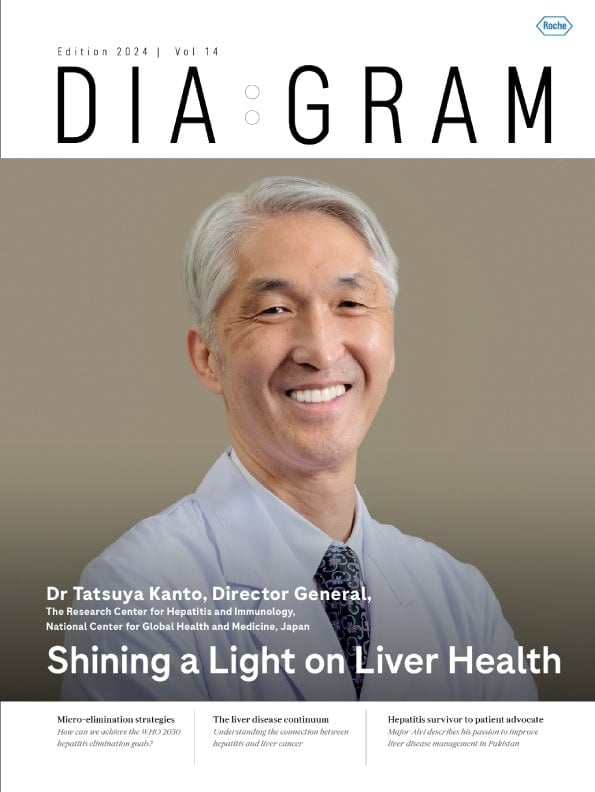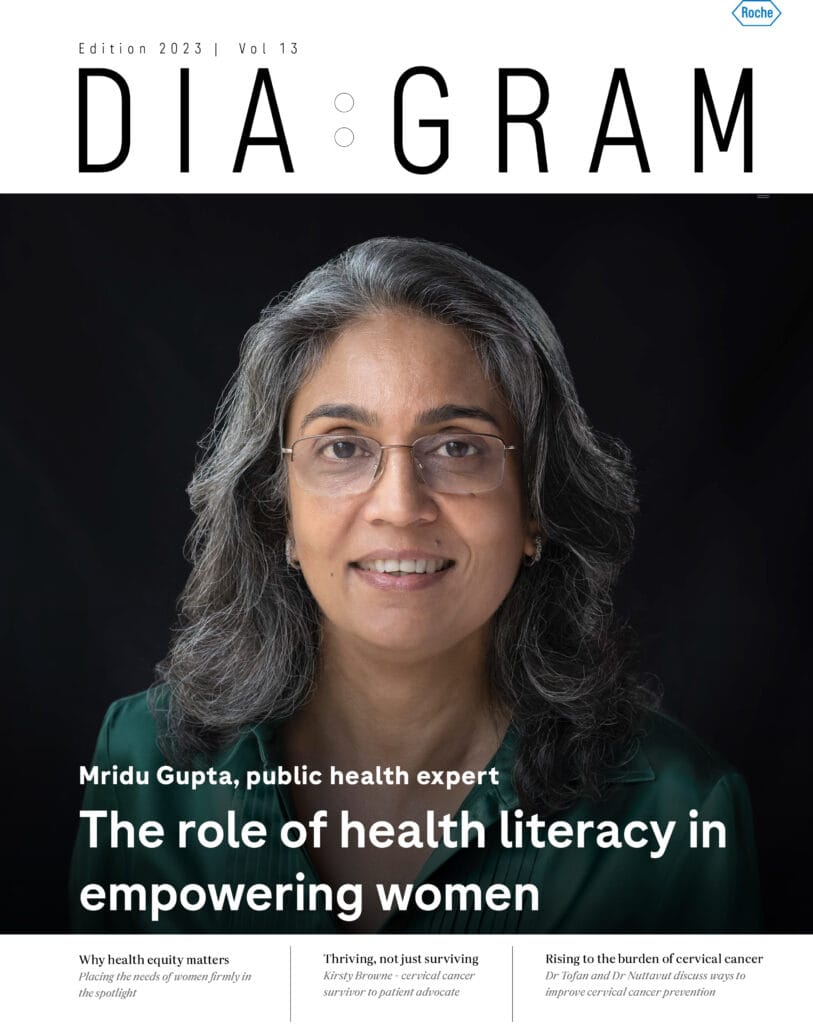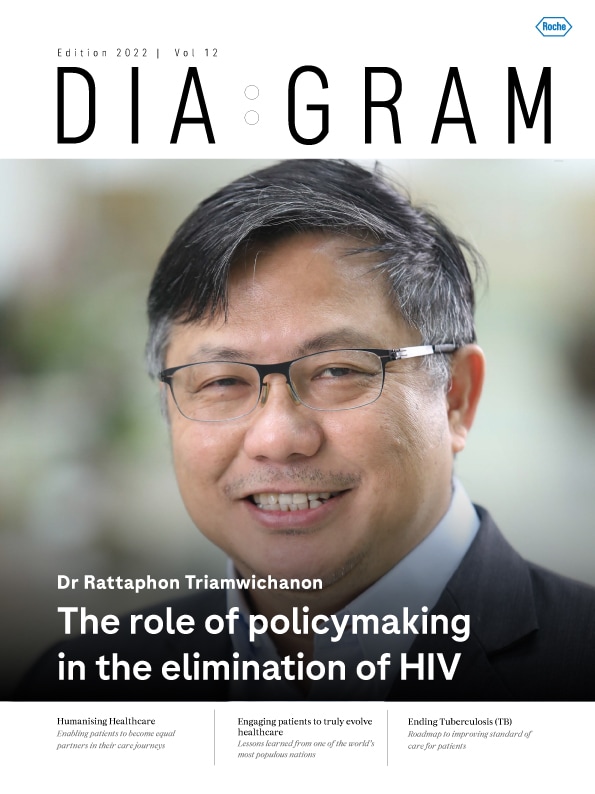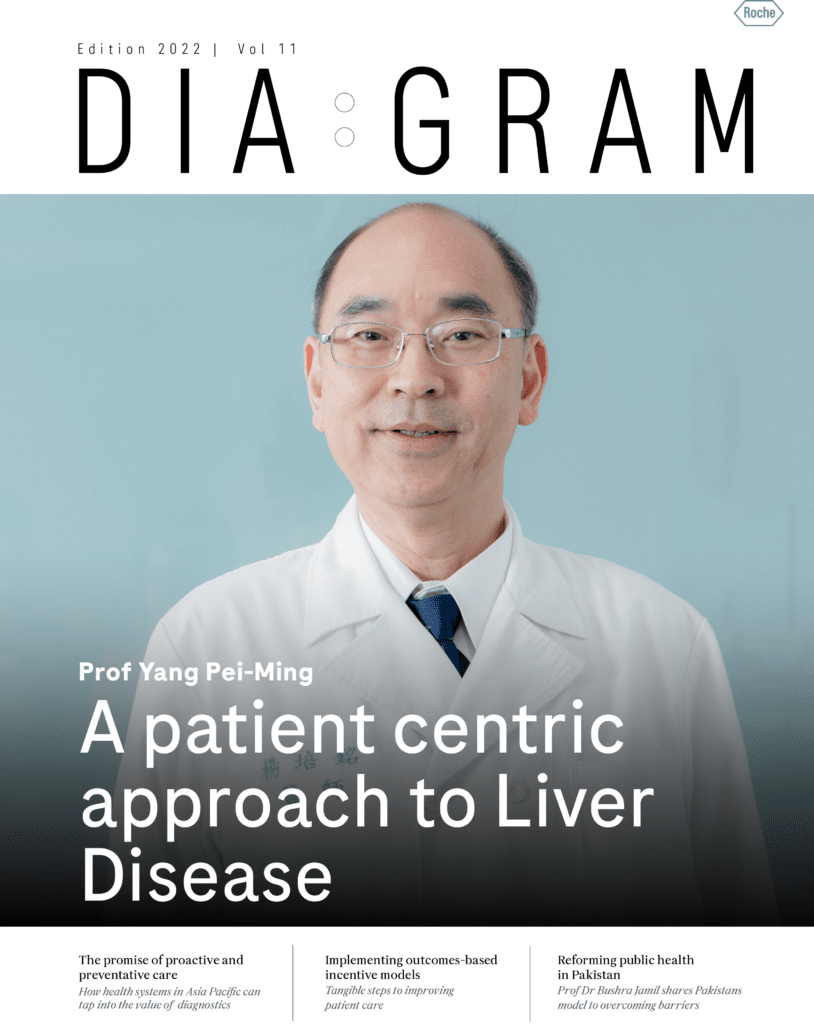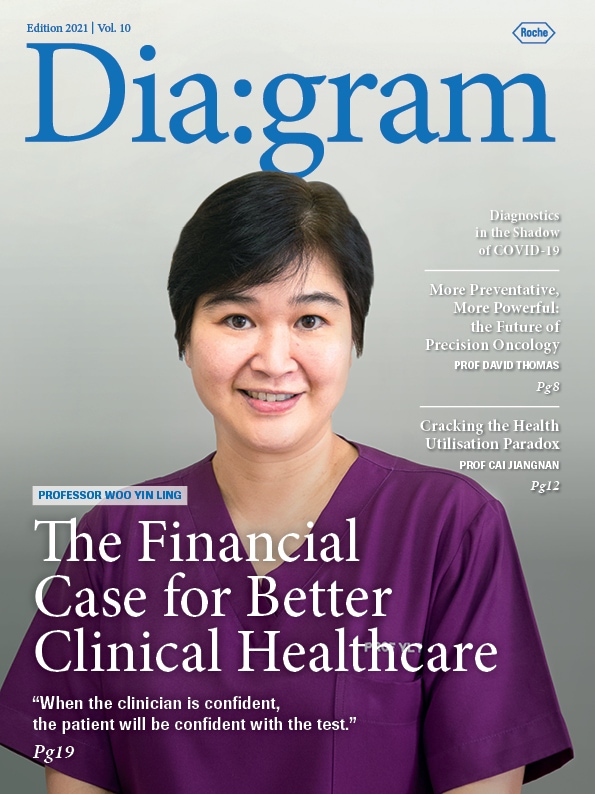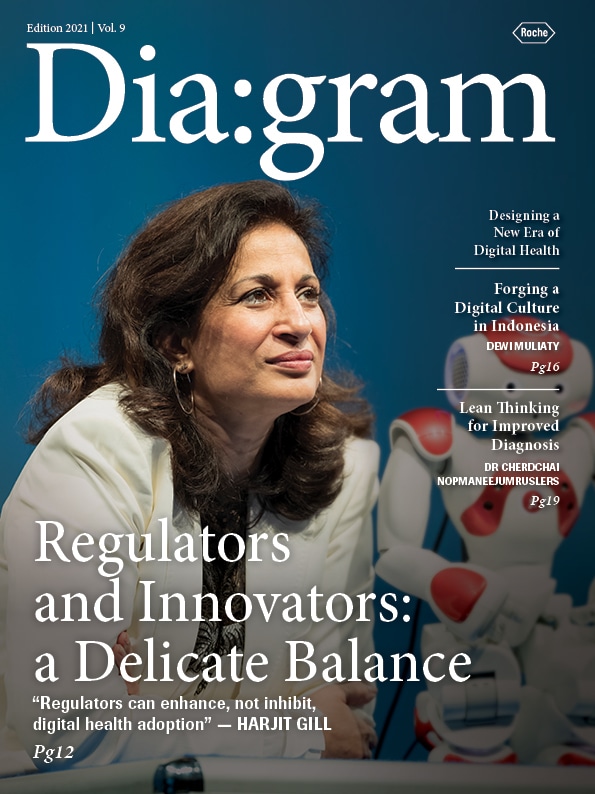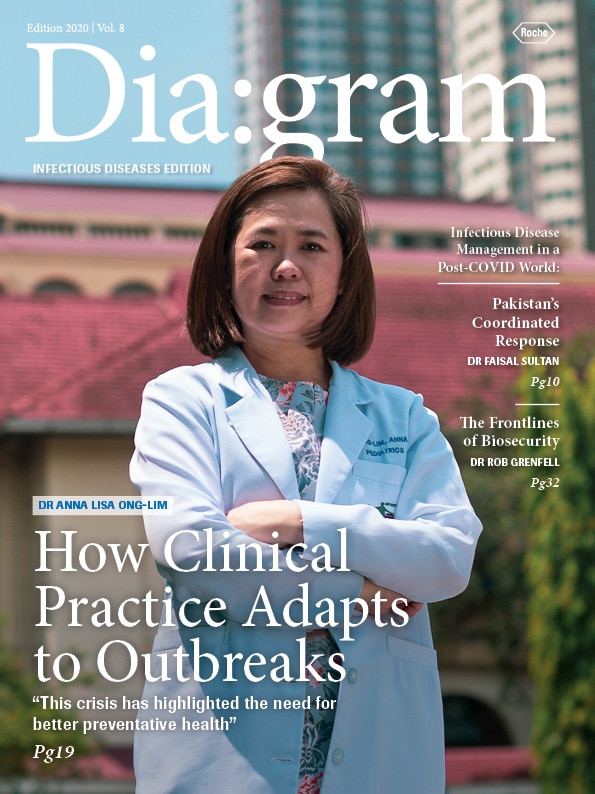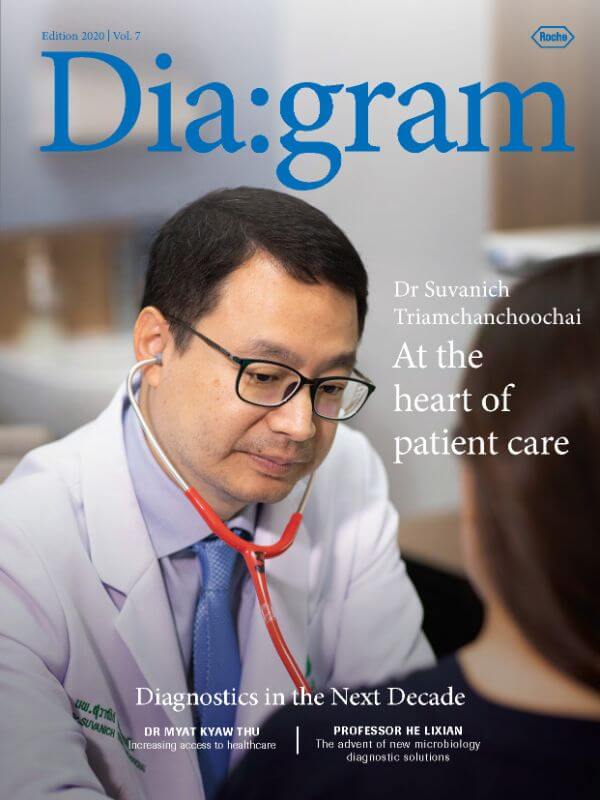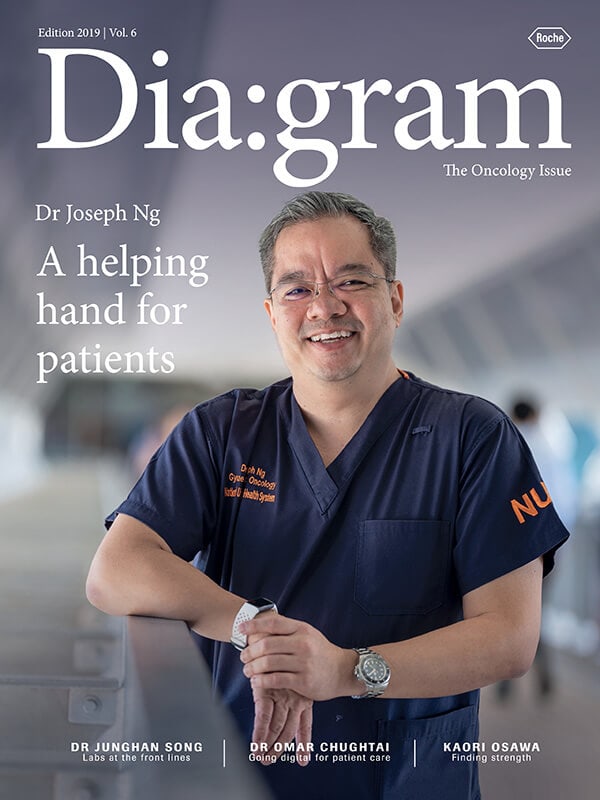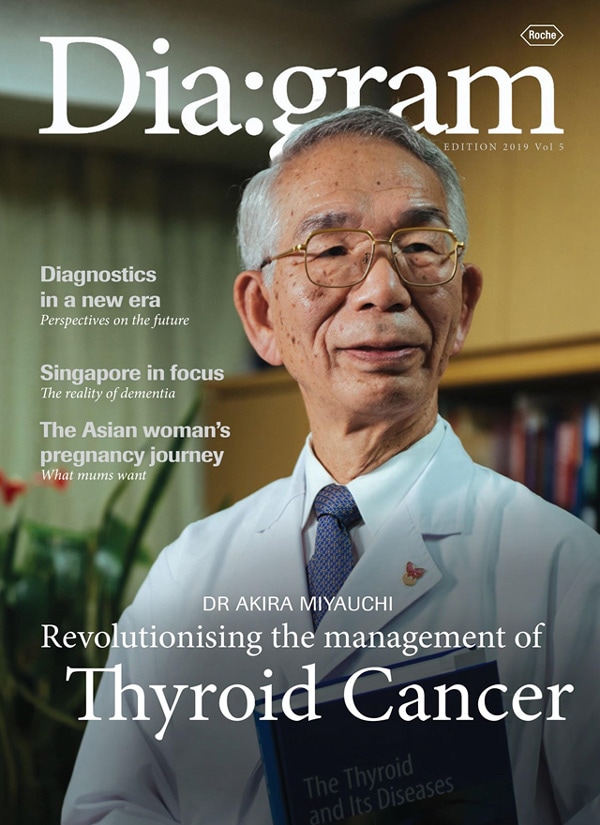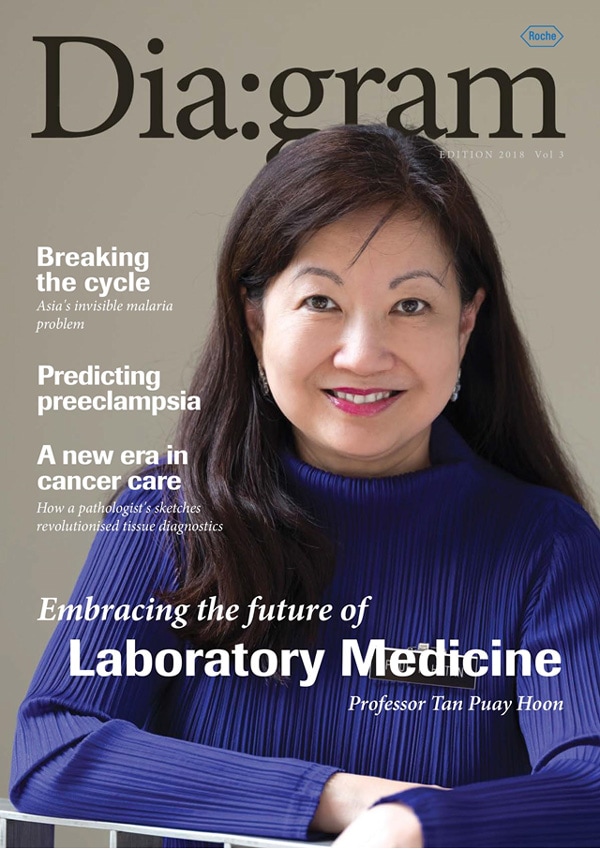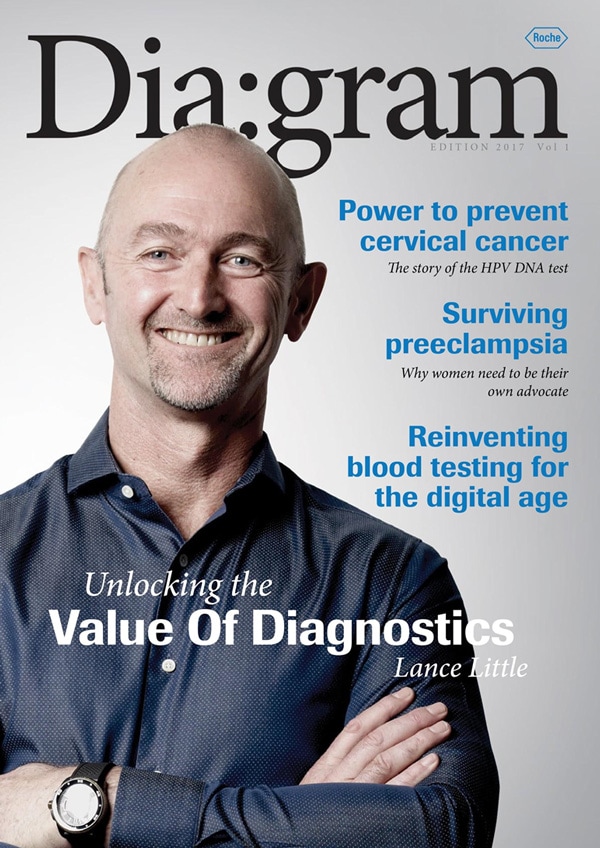How one pathologist on a mission transformed millions of lives
Dr Thomas Grogan is an American pathologist and the founder of Ventana Medical Systems, which was acquired by Roche in 2008. He pioneered the automation and standardisation of tissue biopsy testing, which has radically changed cancer detection and treatment. But his mission didn’t end there. He and his team expanded their research to the chemistry of cancer biopsies, which has enabled physicians to personalise diagnosis and treatment options for individual cancer patients. In this interview with Roche Diagram magazine, Dr Grogan, now Founder Emeritus, gives us a glimpse into what he calls the joy of discovery and the advancements in tissue diagnostics since then.

What shocked Dr Thomas Grogan the most when he was a medical student was that death from cancer was seen as inevitable. “I was always bothered by that. To me, if something is particularly threatening, you need to rise to the threat and use everything you have against it,” he said.
This attitude of pushing boundaries, never settling or taking ‘no’ for an answer, led to extraordinary achievements that continue to benefit millions of cancer patients across the world. On a personal front, it helped Dr Grogan drive his own diagnosis and recovery from metastatic melanoma two years ago. This provided inspiration for yet another invention to simplify decision-making for cancer treatment in the information age. “One of the things I hear from oncologists today is that they get more information than is actionable. They are inundated by reports from multiple laboratories. The molecular, immunologic and radiologic reports are not integrated,” he said.
This patient-centred thinking set Dr Grogan off on the path of discovery and invention. In the early 1980s, Dr Grogan joined the University of Arizona’s faculty of health sciences after completing a post-doctoral fellowship at Stanford University.
The path to earning this degree was remarkable in itself as he was the first member of his family to go to college. Since he was about 12 years old, Dr Grogan said he knew he wanted to be a medical doctor.
“I had a brother who was mentally disabled. I remember even as a small boy feeling that it was very awkward and painful that we didn’t understand what the doctors were telling us, and it left me with a yearning. I wanted to know more.”
He went into pathology because he wanted to be the one who knew what the diagnosis was. “A radiologist can tell you where it is, a surgeon can take it out, but do they know what it is, and how much they should take out?”
From name-callers to navigators
Dr Grogan credits his professor at Stanford for the idea of using monoclonal antibodies on human biopsies to discover additional information about the tissues. “With this approach, we could begin to see the ‘vocabulary’ of more than a 100,000 proteins,” he said. At the time, the idea that you could look at a biopsy and decode its chemistry was absolutely new to medicine. “It opened a new door where we could say it’s not just breast cancer, but it is estrogen receptor positive or HER2 positive. We went from being name-callers to getting at the biology of the tumour cell.”
Dr Grogan describes the University of Arizona as a perfect cauldron of clinicians, engineers and scientists who shared an unbounded enthusiasm for discovery. The head of the oncology department was a graduate of Stanford and already familiar with Dr Grogan’s work. “He was over-the-moon enthusiastic for me to tell him about the chemistry of his patients’ biopsies. We would have weekly conferences and I would show him my findings. Before I knew it, I had younger people coming up to me in the lab wanting to make an antibody, test a theory or write the next paper,” he said.
Almost every single problem the team worked on proved worthy of a paper. “I published a paper every six weeks for 30 years. More than 260 papers and a number of them in top journals. So it was really a discovery tool, and it turns out all those discoveries were relevant to understanding the nature of a person’s cancer and choosing the right therapy,” he said.
This took place while half of Dr Grogan’s time was still spent covering the hospital. With each case, he and his team turned to the practical matter of whether they could refine their diagnoses. “People in training would see us pull a rabbit out of our hats, figure something out and come to a diagnosis that surprised them. They then understood the power of doing all this chemistry.”
Discovering the nature of the beast
The abiding question that remained was why one person could be cured while another with the same diagnosis could not.
“It had to do with the nature of the beast. Not everything with four legs and hooves was a horse, sometimes it was a zebra,” he said.
Dr Grogan knew that the answer lay in interrogating the biopsy for the vocabulary of gene expression. This revealed what the cancer cells were dependent on, what their growth factors were and therefore, the answer as to what might be a good target for therapy.
Dr Grogan credits many aspects of the birth of his company to the team of people he worked with and the patients he helped. He was on faculty at one of the top ten cancer centres in the country. Every time he analysed the tumour chemistry for a patient, he would get a call from the oncologist who said: ‘I want you to do this with every one of my patients.’ He recalls the pivotal role his head technician, Catherine Rangel, played.
“I had put up a sign in the clinic in the operating room which said: ‘Before you remove the tissue, call the Grogan lab,’ and my head technician along with one of the residents, would always go and talk to the patient before the surgeon or the oncologist. The next thing I knew, she was promising that the results would be out by the next day,” he said.
Dr Grogan said she connected him with the people in those rooms. “In the lab, we were living in splendid isolation. And she would say she had told the patient we would deliver results by tomorrow afternoon. It brought home the fact that what I was doing in academia for my professorial colleagues should actually be done on every biopsy, and every patient in every hospital, in every city and in every country in the world,” he said.
A tale of rejection and triumph
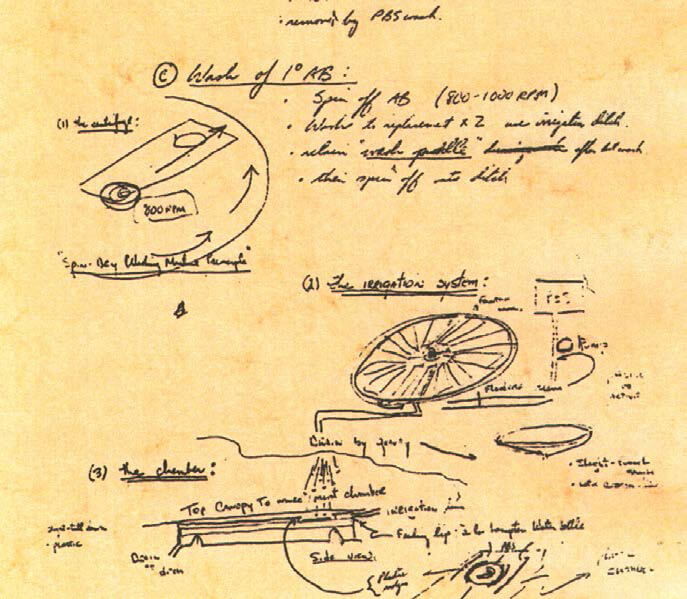
It was at this point that Dr Grogan had the idea to build a platform to allow everyone to do what he was doing. He remembers discussions with engineers and graduate students on automation and the rough sketch of the idea that would become the first automated slide-staining instrument.
Dr Grogan realised then that this was more than an academic project and that it needed professional financing. He got on a plane and flew to Chicago, Dallas and Silicon Valley to secure funding which would only come after 18 months and 35 rejections.
“My wife, Cande, always said that my fundamental ability is to talk people into something that they wouldn’t do otherwise.” Dr Grogan remained tenacious because he believed in the idea and the implications. After the 25th rejection, he had an epiphany. He realised he was presenting to investors to prove that he had a viable business idea that would make money. Instead, he started to show cases where his method actually worked. “I began presenting four patients, whose diagnoses and treatment I had changed in the hospital because of doing this chemistry. These were dramatic cases. I started to go with the fact that if you had the new immunohistochemistry, you could provide this improved diagnosis to people everywhere.”
From all the rejections, Dr Grogan learned a valuable lesson that he applied carefully when he went on to build his company. He recalls going to Silicon Valley where the groups he was talking to were nowhere near a hospital.
“A few times, groups that I presented to said, ‘we talked to physician consultants and they said they don’t need this.’ I knew that these groups simply did not have proximity to the problem, and I said to myself
‘when somebody gives me a definitive dismissal because of a technological reason, or a better way to do this, then I’ll surrender. But so long as they’re dealing with this superficially, I’m not going to give in.’
I would say a righteous twig snapped in me.”
Leading with the concept of proximity to the patient
This spirit kept him going until he finally found Venture Capitalist No. 36 – a man who wanted to see the idea in action. When he came to the lab for the first time, the case they were working on was of a 30-year-old mother of three who had breast cancer that had been misdiagnosed. “He sat there with the microscope and he saw how we corrected the diagnosis. The next day there was another case, and he realised what the need was. He was the first one to actually come into the hospital and experience this himself,” Dr Grogan said.
Another core driver was Dr Grogan’s belief in the power of teams. He does not subscribe to the notion of a singular genius entrepreneur. “My advice to someone starting out is to find the other people who want to climb the mountain with you and really build those alliances. You’re not going to make it to the top of Mount Everest alone. It needs to be a team.”
Today, Dr Grogan looks back at his own persistence and laughs: “Can you imagine proposing marriage 35 times? I should have gone to the monastery.” But he looks back with immense pride that his discoveries eventually reached 100 countries and continue to help millions of patients each year.
Dr Grogan believed in weaving this proximity to the patient into the fabric of the company he built. He felt that the business side did not often have visibility to the consequences of their work. So he started to interview cancer patients during quarterly employee meetings.

Over time, his employees got to know these patients and what happened to them. They began to see the impact of their work and the ways it affected the lives of patients. “The culture is not strong if it’s one person. It is strong if it’s transmissible, and therefore sustainable. I am proud to have transmitted this culture to 1,200 people in a sustainable way,” he said.
Driving a higher level of information to power personalisation
At 72, Dr Grogan is just old enough to remember a time when patients were not told they had cancer because not much could be done about it. Today, he sees it as a highly informed equation in which the patient gets some combination of surgery and radiotherapy or chemotherapy or immunotherapy. He experienced this first-hand with his own diagnosis of a malignant melanoma with an 80% chance of recurrence. When the neck dissection showed that the lymph nodes were negative, the initial advice was to just wait and use targeted therapy if there was a recurrence.
But Dr Grogan did not want to wait given the aggressive nature of his cancer. This was a threat and he wanted to fight it with everything he had.
He approached the company’s team of pathologists and scientists who were working on a multiplexed test that could detect several immune biomarkers simultaneously, and together they figured out his tumor had an immune blockade. Dr Grogan also had his team pull together the many streams of information, which amounted to some six feet of filing cabinet space, on to his iPad. Dr Grogan was familiar with the groundbreaking work of a professor of oncology at the University of California, Los Angeles, and took this information to him.
“We got into the treatment room, and I whipped out the iPad that the team had organised to show all of my results. By this means, six feet of paper was reduced to my pushing of buttons to show him what my tumour looked like, what the immune blockade looked like and what my immune response to this looked like. This professor looked at me and he said ‘how did you do this?’ I joked, well, it’s complicated. You have to create a company; you have to have 1,200 employees and you have to get them to do this,” Dr Grogan said. The professor found the results actionable and put Dr Grogan on immunotherapy, which sent his cancer into remission.
“So I’ve lived because of a higher level of information, thanks to our latest automated instrument and latest multiplexed tests. But it’s not just about me, it’s about everyone. Every patient should have that and not just a professor and founder, so globalising our technology remains a high priority,” he said. For much of history, cancer treatments have lagged behind diagnostics. Dr Grogan sees that changing now with the advent of immunotherapy. “For the first time, the therapies have gotten ahead of the diagnostics and in some cases we are rushing to get the diagnostics done to match the therapy,” he said.
This means the role of the pathologist is more vital than ever in a world of personalised healthcare. Dr Grogan is a very strong proponent of the pathologist becoming an integral part of the multi-disciplinary care team. “There is a notion that pathologists are just in the basement doing autopsies,” but Dr Grogan really sees the pathologist as the chief navigator.
“I think pathologists by nature of vocation are intellectual, and not loud or overbearing. I’m not advocating that they change their personality but I am advocating that they be more assertive about their contribution to the practice of medicine,” he said.

